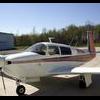Poor Engine Power (RPM) Problems - M20J
-
Members Online
- EricShr
- Greg Ellis
- CCAS
- Rogerg
- Red Leader
- Hudd
- GeeBee
- hazek
- Danb
- Aaviationist
- lotsofgadgets
- Ibra
- dmevans
- AgFlyer
- Will.iam
- Mathias
- BrianWilkins
- midlifeflyer
- Schllc
- eman1200
- spistora
- cbarry
- MarkD34M
- Fly Boomer
- dzeleski
- BlueSky247
- Stealth Mooney
- LANCECASPER
- Blaze
- Nilium
- Tito22
- turbofan
- Gone
- 00-Negative
- affricate
- chrisburdzy98


Recommended Posts
Join the conversation
You can post now and register later. If you have an account, sign in now to post with your account.